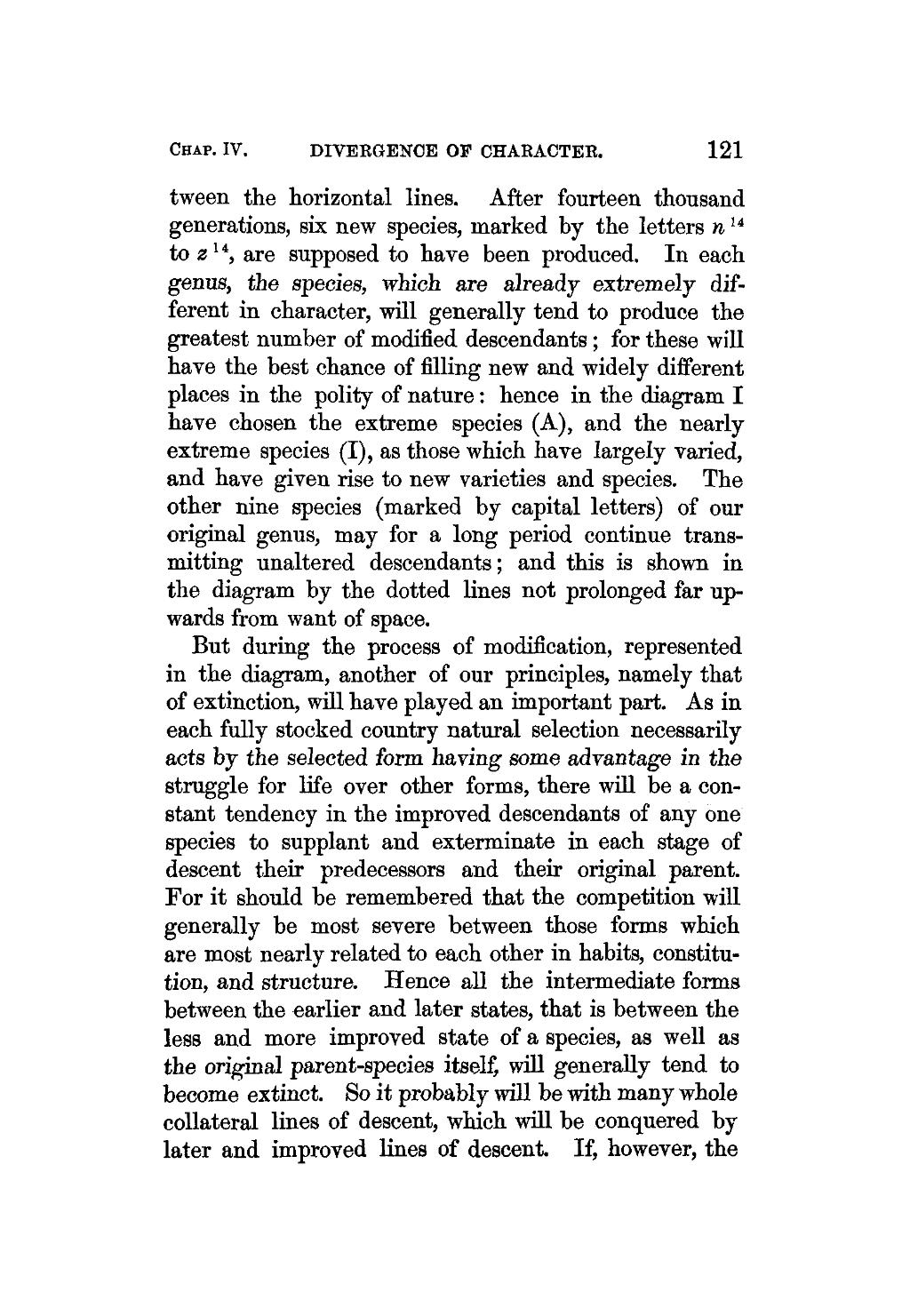tween the horizontal lines. After fourteen thousand generations, six new species, marked by the letters n14 to z14, are supposed to have been produced. In each genus, the species, which are already extremely different in character, will generally tend to produce the greatest number of modified descendants; for these will have the best chance of filling new and widely different places in the polity of nature: hence in the diagram I have chosen the extreme species (A), and the nearly extreme species (I), as those which have largely varied, and have given rise to new varieties and species. The other nine species (marked by capital letters) of our original genus, may for a long period continue transmitting unaltered descendants; and this is shown in the diagram by the dotted lines not prolonged far upwards from want of space.
But during the process of modification, represented in the diagram, another of our principles, namely that of extinction, will have played an important part. As in each fully stocked country natural selection necessarily acts by the selected form having some advantage in the struggle for life over other forms, there will be a constant tendency in the improved descendants of any one species to supplant and exterminate in each stage of descent their predecessors and their original parent. For it should be remembered that the competition will generally be most severe between those forms which are most nearly related to each other in habits, constitution, and structure. Hence all the intermediate forms between the earlier and later states, that is between the less and more improved state of a species, as well as the original parent-species itself, will generally tend to become extinct. So it probably will be with many whole collateral lines of descent, which will be conquered by later and improved lines of descent. If, however, the
